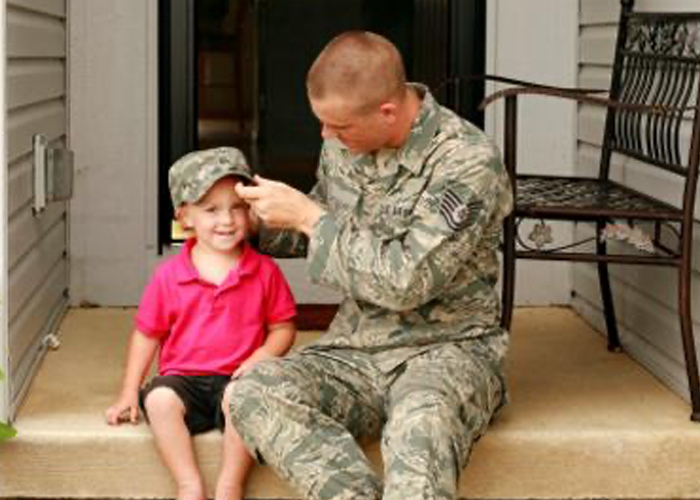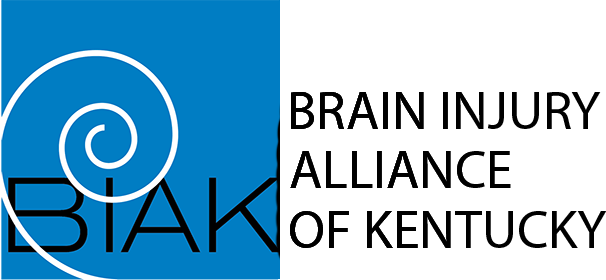Understanding TBI: Part 3 – The Recovery Process

Possible stages of recovery
In the first few weeks after a moderate to severe brain injury, swelling, bleeding or changes in brain chemistry often affect the function of healthy brain tissue. The injured person’s eyes may remain closed, and the person may not show signs of awareness. As swelling decreases and blood flow and brain chemistry improve, brain function usually improves. With time, the person’s eyes may open, sleep-wake cycles may begin, and the injured person may follow commands, respond to family members, and speak. Some terms that might be used in these early stages of recovery are:
- Coma: The person is unconscious with eyes closed continuously, does not respond to visual stimulation or sounds, and is unable to communicate or show emotional responses.
- Vegetative State: Another term for this is Unresponsive Wakefulness Syndrome. Typically, the person can breathe on their own. Their eyes can be open, and they have sleep-wake cycles. Reflexes are functioning. For example, the person may startle to noises and visual stimulation, and make some movements, but the movements are not purposeful.
- Minimally Conscious State: The person is partially conscious, may know where sounds and visual stimulation are coming from, and recognize objects. Sometimes they reach for objects upon request. They may respond to commands, utter words, or show emotion, but these responses are often inconsistent. Once the person is able to accurately answer basic questions (e.g., “Is you name John?,” Is it daytime now?”), or show that they know how to use at least two different objects correctly (e.g., spoon, pencil), then they are considered “emerged” from the minimally conscious state.
A period of confusion and disorientation often follows a moderate-severe TBI. This may be referred to as post-traumatic amnesia; but a more correct name is confusional state. A person’s ability will have difficulty paying attention and remembering things during this time. Often, they are agitated, nervous, restless, and easily frustrated. Sleeping patterns may be disrupted. The person may overreact to stimulation, such as noise. They may get upset easily. Sometimes a person may not know what’s real and what isn’t. They may see things that aren’t there. This stage can be disturbing for family because the person behaves so uncharacteristically.
Inconsistent behavior is also common. Some days are better than others. This stage of recovery may last days or even weeks for some people. In this stage of recovery, ups and downs are normal and are not cause for concern. Ups and downs are normal.
Later stages of recovery can bring increased mental and physical function. In most cases, the person’s ability to respond gets better over time.
Length of recovery
Often, the fastest improvement happens in the first six months after injury. During this time, the person with the injury will likely move and think better. As time goes by, the speed of improvement will slow down, but the person may continue to gain more function for years after the injury. Rate of improvement varies from person to person. We do not know the reasons that the rate is different between people. For this reason, it is recommended that people with injury do what they can to support the health of their brain for the rest of their lives. Brain health is supported through healthy behaviors, such as exercise and avoiding alcohol and other drugs
Long-term impacts
It is common and understandable for family members and other caregivers to have many questions about the long-term effects of the brain injury on the injured person’s ability to function in the future. Unfortunately, when a person first starts to get better, it’s hard to know the long-term effects for many reasons.
- We have just begun to understand the possible effects of TBI many years after injury. The TBI Model System program will continue to do studies focusing on outcome after TBI.
- Brain scans and other tests are not always able to show the full extent of the injury, so early in recovery it is sometimes difficult to understand how serious the injury is.
- The type of brain injury and extent of related problems, such as brain swelling, varies a great deal from person to person.
- Age and pre-injury health and abilities also affect how well a person will recover.
We do know that the more severe the injury, the less likely the person will fully recover. How long a person remains unconscious and how long they remain in the confusional state after that may help to predict how well and how quickly a person will recover.
Recovery two years after brain injury
Research from the TBI Model System program, at 2 years after injury, offers information about recovery from a moderate to severe TBI.
- About 30% of people need some amount of assistance from another person. This may be during the day, at night, or both. Over time, most people can move around again without help. They can also take care of themselves. This includes bathing and dressing.
- Trouble with thinking is common. This includes how fast a person can think. It also includes forming new memories. The severity of these problems varies.
- About 25% of people have major depression. In some cases, it’s caused directly by the brain injury. In addition, people with TBI are also dealing with major changes in their lives caused by the trauma, including changes in employment, driving, and living circumstances.
- Just over 90% of people live in a private home. Of those who were living alone when they were injured, almost half go back to living alone.
- About 50% of people can drive again, but there may be changes in how often they drive or when.
- About 30% of people have a job, but it may not be the same job they had before the injury. Many people get help from vocational rehabilitation counselors who help people with TBI and other disabilities to go back to work.
Keep in mind that these percentages apply across a large group of people recovering from moderate to severe TBI and refer to a time 2 years after injury. For an individual, particularly early in recovery, it is difficult to say if that person will return to work, live independently, require supervision, and so forth. Also, recovery in these areas can still occur after 2 years. Age of the injured person, health history, environmental factors, and independence/activities before the injury are important factors in recovery as well. This information is not intended to discourage a person with TBI or family members, but to raise awareness that recovery from moderate-severe TBI is a long road for some people and there can be consequences from the TBI that may require adjustment on the part of the person with the injury and family members.
More in the Understanding TBI Series
- Part 1 – What happens to the brain during injury and the early stages of recovery from TBI?
- Part 2 – Brain injury impact on individuals’ functioning
- Part 4 – The Impact of a Recent TBI on Family Members and What They Can Do to Help with Recovery
More TBI Factsheets from the Model Systems Knowledge Translation Center (MSKTC)
Several of the issues mentioned in this factsheet are presented in more detail in other MSKTC factsheets on TBI. Visit https://msktc.org/tbi/factsheets to read and download these factsheets, as well as the Understanding TBI factsheet series at https://msktc.org/tbi/factsheets/Understanding-TBI.
References
Giacino, J. T., Ashwal, S., Childs, N., Cranford, R., Jennett, B., Katz, D. I., … Zasler, N. D. (2002). The minimally conscious state: definition and diagnostic criteria. Neurology. 58, 349-53.
Laureys S, Celesia GG, Cohadon F, Lavrijsen J, León-Carrión J, Sannita WG, Sazbon L, Schmutzhard E, von Wild KR, Zeman A, Dolce G; European Task Force on Disorders of Consciousness. Unresponsive wakefulness syndrome: a new name for the vegetative state or apallic syndrome. BMC Med. 2010 Nov 1;8:68. doi: 10.1186/1741-7015-8-68.
Authorship
Understanding TBI was developed by Thomas Novack, PhD and Tamara Bushnik, PhD in collaboration with the University of Washington Model Systems Knowledge Translation Center. Portions of this document were adapted from materials developed by the University of Alabama TBIMS, Baylor Institute for Rehabilitation, New York TBIMS, Mayo Clinic TBIMS, Moss TBIMS, and from Picking up the pieces after TBI: A guide for Family Members, by Angelle M. Sander, PhD, Baylor College of Medicine (2002).
Source: The content is based on research and/or professional consensus. This content has been reviewed and approved by experts from the Traumatic Brain Injury Model Systems (TBIMS), funded by the National Institute of Disability, Independent Living, and Rehabilitation Research, as well as experts from the Polytrauma Rehabilitation Centers (PRC), funded by the U.S. Department of Veterans Affairs.
Disclaimer: The information is not meant to replace the advice of a medical professional. You should consult your health care provider regarding specific medical concerns or treatment. This publication was originally produced by the TBI Model Systems in collaboration with the University of Washington Model Systems Knowledge Translation Center with funding from the National Institute on Disability and Rehabilitation Research in the U.S. Department of Education (grant number H133A060070). It was updated by the TBI Model Systems in collaboration with the Model Systems Knowledge Translation Center at the American Institutes for Research with funding from the National Institute on Disability, Independent Living, and Rehabilitation Research (grant number 90DP0082). NIDILRR is a Center within the Administration for Community Living (ACL), Department of Health and Human Services (HHS). The contents of this factsheet do not necessarily represent the policy of NIDILRR, ACL, HHS, and you should not assume endorsement by the Federal Government.
Copyright © 2019 Model Systems Knowledge Translation Center (MSKTC). You can freely reproduce and distribute this content. Include proper attribution. But you must get permission before using this content in feebased products.
ABOUT US
CONTACT US
7321 New LaGrange Road
Suite 100
Louisville, KY 40222 USA
Phone: 502.493.0609
Email: info@biak.us
OFFICE HOURS
ABOUT US
CONTACT US
7321 New LaGrange Road
Suite 100
Louisville, KY 40222 USA
Phone: 502.493.0609
Email: info@biak.us
OFFICE HOURS


